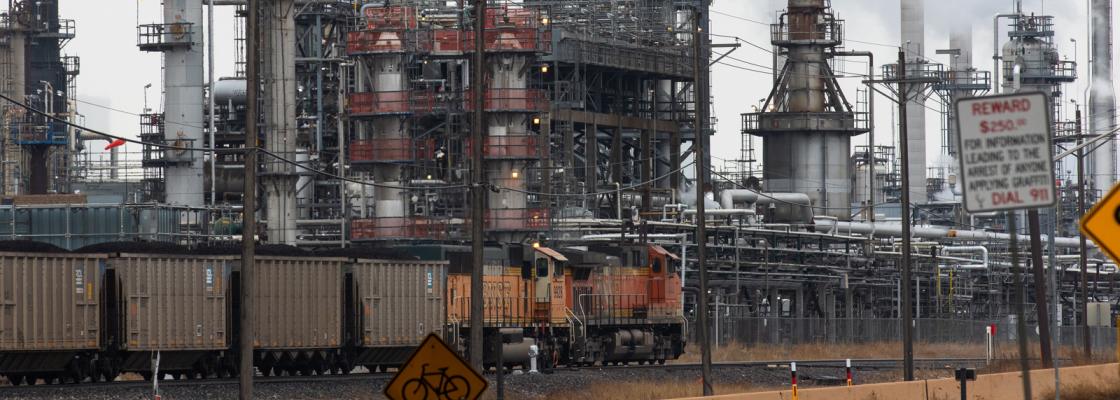
Photo courtesy of CDOT.
In 2017, the Federal Highway Administration issued the System Performance, Freight, Congestion Mitigation and Air Quality Improvement Program Performance Measures Final Rule.
The rule evaluates the performance of both the interstate and non-interstate portions of the National Highway System to advance the National Highway Performance Program. It also assesses freight movement on the Interstate Highway System and evaluates traffic congestion and on-road mobile source emissions to support the implementation of the Congestion Mitigation and Air Quality Improvement Program.
Travel time reliability
Staff of the Colorado Department of Transportation and the Denver Regional Council of Governments are responsible for reporting travel time reliability measurements on both the interstate and non-interstate National Highway System.
While CDOT is mandated to establish two-year and four-year targets. DRCOG is only required to set four-year targets. Following deliberation, DRCOG's Board of Directors opted to uphold its support for CDOT's travel time reliability performance targets.
| Travel Time Reliability | Four-Year Targets |
|---|---|
| Percent of the person-miles traveled on the interstate that is reliable. | 79% |
| Percent of the person-miles traveled on the non-interstate National Highway System that is reliable. | 94% |
Freight reliability
An additional measurement mandated for travel time reliability pertains to freight on the Interstate Highway System, known as the Truck Travel Time Reliability Index. The index is segmented into five periods: morning peak, midday and afternoon peak Monday to Friday; weekends; and overnight for each day. The Truck Travel Time Reliability ratio is computed by dividing the 95th percentile time by the 50th percentile for each segment. Subsequently, the Truck Travel Time Reliability Index is derived by multiplying the largest ratio of the five periods for each segment by its length, and then dividing the sum of all length-weighted segments by the total length of the interstate.
CDOT is obligated to establish two-year and four-year targets for freight reliability. DRCOG is required to set four-year targets. Following deliberation, the DRCOG Board of Directors chose to endorse CDOT's performance targets regarding freight reliability.
| Freight Reliability | Four-Year Targets |
|---|---|
| Truck Travel Time Reliability Index | 1.46 |
Traffic congestion reduction
The traffic congestion reduction subpart pertains to all urbanized areas encompassing mileage of the National Highway System with a population exceeding 200,000 individuals. Such areas may be wholly or partially designated as nonattainment or maintenance areas for ozone, carbon monoxide or particulate matter according to the National Ambient Air Quality Standards.
| Traffic Congestion Reduction | Baseline | Two-Year Targets | Four-Year Targets |
|---|---|---|---|
| Percent of non-single occupancy vehicle travel | 27.3% | 26.7% | 27.7% |
| Annual hours of peak-hour excessive delay per capita | 11.7 | 15.8 | 17.4 |
On-road mobile source emissions reduction
The on-road mobile source emissions reduction performance measure exclusively applies to state departments of transportation and metropolitan planning organizations that encompass any portion of a nonattainment or maintenance area for ozone, carbon monoxide or particulate matter as defined by the National Ambient Air Quality Standards. The implementation of this measure is confined to these areas to further the objective of the Congestion Mitigation and Air Quality Improvement Program, which allocates funding to programs and projects aimed at achieving compliance with the National Ambient Air Quality Standards.
In metropolitan planning organizations with a population exceeding 1 million designated as nonattainment or maintenance areas, both two- and four-year targets are mandatory. For those with a population below 1 million, only a four-year target is required.
Given that the DRCOG planning area's population surpasses 1 million and was designated as nonattainment/maintenance for ozone, carbon monoxide and particulate matter at the time of the applicability determination, staff had to establish performance targets spanning both two and four years for each criteria pollutant.
Accordingly, the DRCOG Board established cumulative two- and four-year total emissions reduction goals for funded projects within the DRCOG region.
| Total Emissions Reduction | Baseline | Two-Year Targets | Four-Year Targets |
|---|---|---|---|
| Total emissions reductions, kilograms per day. | 388.191 | 209.97 | 423.397 |
| Total emissions reductions, kilograms per day. | 41.385 | 23.900 | 47.800 |
| Total emissions reductions (carbon monoxide), kilograms per day. | 6,006.652 | 2,583.027 | 5,213.589 |
| Total emissions reductions (nitrogen dioxide), kilograms per day. | 707.876 | 397.012 | 800.557 |
